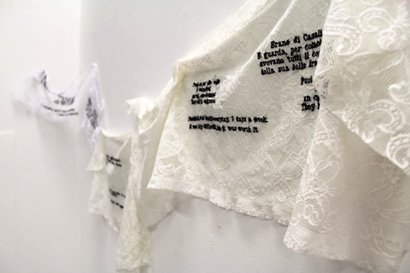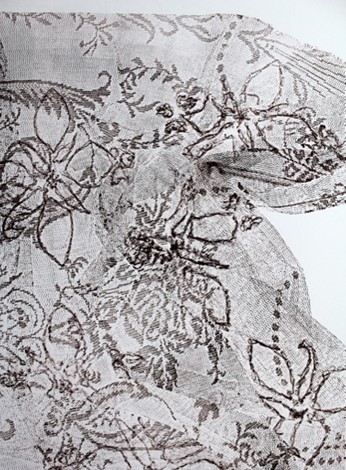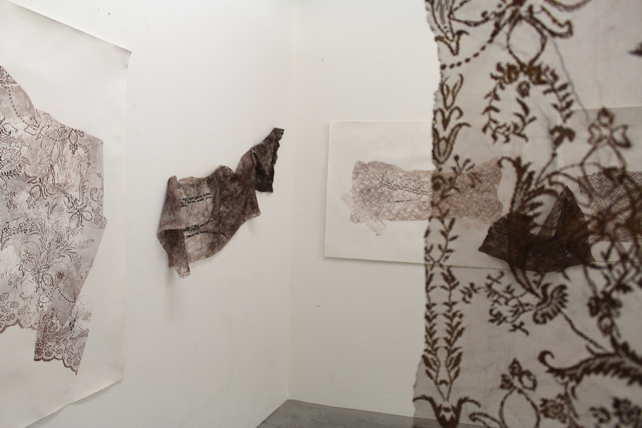Migration and Visual Arts
By Corinna Citro
The process of my grandparent’s migration to England has always both fascinated and inspired me. It has shaped my life and my understanding of identity and multiculturalism. I grew up with two cultures and have been blessed with a wealth of both Italian and British traditions, enjoying music, food, dance, art and language. However, at times I cannot help but feel ‘in-between’ lives and countries, neither fully here nor fully there which is why, I believe, I have spent my years in education expressing notions of my identity and heritage through visual arts as a method of understanding and celebrating my identity, heritage and sense of belonging.
My name is Corinna and what I enjoy and love most about life evolves around creativity, culture and family, which I find are intertwined within my studies. I am currently in my final year at Loughborough University studying Fine Art where I have been able to develop my knowledge and artistic skill set through comprehensive research and experimentation with guidance from tutors. This has allowed me to develop my creative ability and explore my identity and heritage with confidence and curiously within the arts. Whilst at university I have been able to experiment with specialised mediums such as paint, film photography, print and ceramics and have become accustomed to materials and techniques directly linking to the migration process of my grandparents such as brick work, lace and embroidery (see figures below of recent experimentation).
A four-year contract from the government to work for the London Brick Company allowed my grandfather (on my mother’s side) to move from Northern Italy to England at the age of 19. In my second year at University I spent time exploring minimalist installation work with LBC bricks and found that I became physically and emotionally connected to my work when I used these mediums to explore, engage and revisit his experiences. Similarly, my grandmother (on my father’s side) left Southern Italy to move to England and spent her time sewing and cleaning to enable her to make a living and begin a new life in England.
I use their archived voice notes and conversations about the difficult experiences of both labour intensive and repetitive daily routines and present this through text and sound within my work. Using my own motif designed from their memories of Italy and family members, I practice embroidery techniques on lace and use this to print with and to further explore and create pieces linking my identity and heritage to my work. The time-consuming process becomes an important element within my work, a time for reflection. As a result, the delicate prints act as a preservation of this migratory experience, this memory as a frozen fragment in time. The pieces celebrate my grandparents (and many others who have similar experiences) achievements whilst projecting my Italian roots.
My Dissertation research highlights key figures who have experienced forms of familial migration including cultural theorist Homi Bhabha and philosopher and feminist theorist Rosi Braidotti. Both of whom challenge notions of thought and reflect on the complexity of our modern society and how one can use ‘conceptual [and theoretical] creativity’ in order to ‘learn to think differently about ourselves and the process of deep-seated transformation’ (Braidotti, 2008). Through this research I have learnt how I can use nomadic consciousness and creative ability to develop my critical thought and understanding. These notions have influenced the conceptual elements of my artwork and thought process around notions of identity.
Artists Sonia Boyce and Yinka Shonibare are also influential figures who reference heritage and identity through visual arts. Boyce, an important member and advocate of the Black British Arts movement, explores themes of gender, race and religion. Her fascinating works raise questions about representation and her continuously developing style results in a range of diverse works that speak to the public through archives and shared memory. Shonibare’s use of patterned batik highlights a history of commodity, trade routes and African representation within changing societies. His medium choice creates innovative, colourful and exciting works that comment on his heritage and cultural hybridity. Both artists have taught me so much and inspired my work throughout this year.

Recently my research has developed further into themes of Identity and the ‘In-between’ through installation. Korean artist Do-Ho Suh, specifically his compelling installation Seoul Home/L.A. Home/New York Home/Baltimore Home/London Home 1999 (see figure below), makes a statement of his identity and explores notions of displacement. Replicating his childhood home with transparent green silk, he projects his experience of transcultural travel and perhaps comments on notions of the ‘in-between’ felt by those with ties to multiple countries. His stimulating use of space allows for viewer interaction, resulting in a thought-provoking place for reflection. This has fuelled my interest in installation art which I have been exploring in my final semester leading to exciting possibilities for our degree show.

When connecting notions between migration and visual arts, it’s worth mentioning one of the most valuable learning opportunities of my university experience so far, which was completing a 6-month work-based internship for sculptor and designer Nacho Carbonell in the Netherlands 2019-2020. From getting hands on experience within the creative industry to developing professional and personal skills, I was able to work collaboratively and form new bonds with international artists whilst gaining an understanding of gallery and client relationships.
This inspiring experience has filled me with optimism and encouraged me to push my creativity further. It has given me insight into the endless possibilities and ever-changing perspective of art and design. I would highly recommend, once COVID-19 restrictions have lifted and when safe to do so, to undertake a placement year if possible, to complete internships and to explore every opportunity made available aboard. The experience of movement and collaboration is beyond enriching. My new understanding of visual art, migration and culture has led to progression in my research and future career aspirations.
So far, my research and experiences have shaped me as an artist, as a thinker and a doer. I aim to continue researching, traveling and learning as much as I can about art and culture.
You can follow Corinna on Instagram @corinnacreative.
The Limit
The Limit showcases the creativity that exists within the student population, creating a sense of community.


